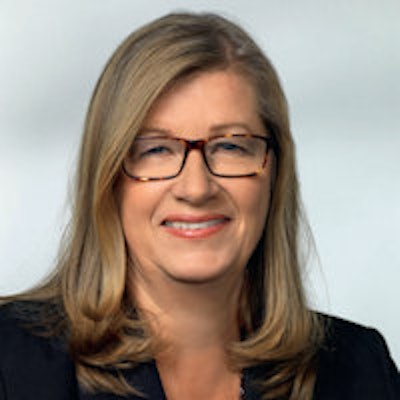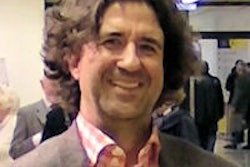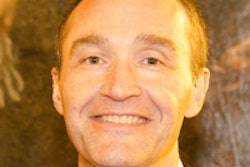
ECR Today spoke with ECR 2016 Congress President Dr. Katrine Åhlström Riklund, PhD, deputy head of the department of radiation sciences and director of the medical school at Umeå University in Sweden.
ECR Today: What will be the highlights of ECR 2016?
Dr. Åhlström Riklund: It is hard to tell what the specific highlights will be more than one year ahead, due to the rapid development of imaging. The highlights will be the entire congress through its well-developed program, which covers the whole range of education from student level to advanced subspecialists. I should say the added content of hybrid imaging in several sessions would make the program even more attractive. Besides the educational and scientific program, the grand opening ceremony and social activities also will be memorable events.
Will there be any new additions to the program?
 Dr. Katrine Åhlström Riklund, PhD, is a radiologist who is also licensed in nuclear medicine at UmeÅ University Hospital in Sweden. She is deputy head of the department of radiation sciences and director of the medical school at Umeå University.
Dr. Katrine Åhlström Riklund, PhD, is a radiologist who is also licensed in nuclear medicine at UmeÅ University Hospital in Sweden. She is deputy head of the department of radiation sciences and director of the medical school at Umeå University.As always, there will be innovations at the ECR. The content of hybrid imaging will be spread across several sessions and not in one single session. The new session formats introduced at ECR 2015, with the European Excellence in Education (E3) program -- divided into five levels (the Rising Stars program, European Diploma Prep Sessions and Beauty of Basic Knowledge program, ECR Academies, and ECR Master Classes) will be continued. These levels cover the entire span from undergraduate medical education to subspecialized continuing professional development. Getting involved in the sessions is important for retaining knowledge.
As current first vice chairperson of the congress committee, you must have a pretty good idea of what is awaiting you next year. What do you think are the necessary qualities for the job?
I think a genuine interest in imaging, a rather broad overview of the field, and a well-sorted hard disk are good things to start with. Besides that, enthusiasm when working with others and the desire to create a good meeting for all attendees are mandatory. Another prerequisite to be able to fulfill. this job is the existence of the excellent staff at the ESR Office, in particular the Scientific Program department, in the lead-up to the congress.
Your subspecialty is nuclear medicine. Will it be reflected in the ECR 2016 program?
Nuclear medicine and radiology techniques are part of my daily work and help me to make the correct decisions regarding the patient's disease or response to treatment. In my position, both specialties are needed for the patient's benefit, and, of course, this will influence the ECR program. There will not be a separate nuclear medicine program; instead, the sessions, especially the ECR Academies, will include integrated hybrid imaging content. We will also have an "ESR meets Nuclear Medicine" session at the congress. This session will show the added value of having both radiology and nuclear medicine experts talking about hybrid imaging.
What is the state of nuclear imaging equipment (PET/CT) in Europe? How far along is PET/MR research on the continent, and how many years are we from its integration into clinical practice?
Before introducing PET/MR into clinical practice, the added value it provides in comparison to PET/CT remains to be shown. I think the transition of PET/MR into clinical practice will be much more rapid than the transition of PET/CT. When problems with attenuation correction are solved, the method will be used in sites that are already equipped. I am already aware of the clinical demands at my own department, where we recently installed a PET/MR machine. The spread of the technique will take some time due to the tight financial situation and the lack of resources. As promoted by the EuroSafe Imaging campaign, PET/MR is preferred, as it will lower the radiation dose to the patient.
Is ECR 2016 likely to have a Swedish touch?
My guess is yes, but it will not only be Swedish. We will organize activities in which delegates will be able to discover all Nordic countries. ESR President Dr. Lluís Donoso Bach is from Barcelona, so you can also expect a touch of Spanish culture at the congress.
You are one of the very few women who have been appointed ECR president. Do you think this share reflects women's presence in high-power positions in the society in general? How could we encourage more women physicians to take on official functions?
Yes, I think the small number of women in these positions still reflects the situation of women involved in high positions in general. I am happy to say that during the years I have been in charge, the situation has been evolving and more women are being elected and accepting high-power positions, so changes are ongoing, even if they are slow.
Originally published in ECR Today on 8 March 2015.
Copyright © 2015 European Society of Radiology



















